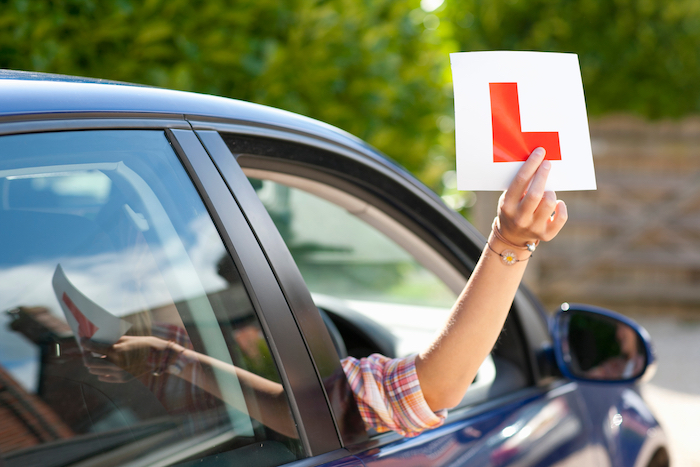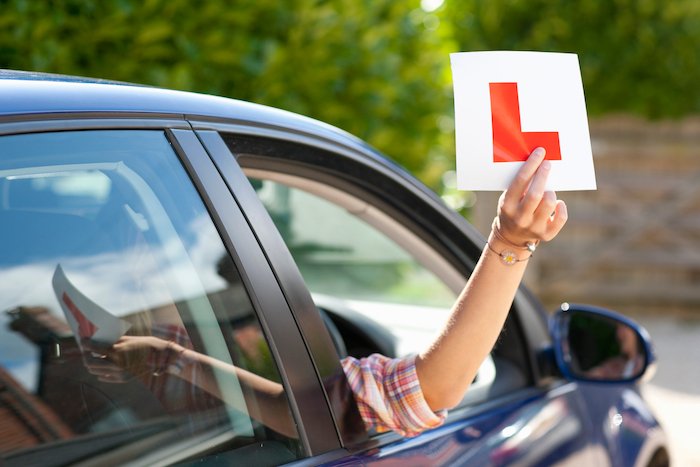Driving in London with just a learner’s permit can be a daunting experience. You might be surprised to find that learner drivers are not allowed to drive alone under this permit. One must always be supervised, ensuring that safety is paramount on the busy streets of this historic city.
Historically, all learners in the UK, including London, have needed a qualified driver with them. This supervision must be from someone over 21 and who has held a full driving license for at least three years. Such regulations are reinforced by statistics showing a reduction in accidents involving new drivers when supervised.

Overview of the Learner’s Permit Regulations in London
In London, obtaining a learner’s permit is a critical step for young drivers. This permit allows them to start practicing their driving skills legally. However, there are several regulations that learners must follow. For instance, they need to be at least 17 years old. Additionally, they must pass a provisional driving test.
One of the primary rules is that learner drivers cannot drive alone. They must always be accompanied by a qualified driver who is over 21 years and has held a full driving license for at least three years. This supervision ensures the learner has guidance while driving. It also increases safety on the roads.
The learner’s permit comes with certain restrictions. For example, the car must have L plates displayed on both the front and back. These plates signal to other drivers that the person behind the wheel is still learning. This rule helps promote cautious driving around learners.
Additionally, night driving and motorway driving are discouraged for learners unless supervised. This is because these conditions can be more challenging. Learners are also not allowed to use their phones while driving, even with hands-free devices. Following these rules helps learners develop safe driving habits.
Key Requirements for Holding a Learner’s Permit
To obtain a learner’s permit in London, the applicant must meet specific age and identity requirements. The minimum age is generally 17, though this can be reduced to 16 for certain disability allowances. Applicants must also provide proof of identity, such as a passport or birth certificate. An eyesight test is required to ensure that the driver can see well enough to drive safely. Passing a multiple-choice theory test is another essential step.
Once the learner’s permit is granted, there are essential criteria to operate a vehicle. All learner drivers must display L plates on their cars. These plates should be visible from both the front and rear of the vehicle. Additionally, they are only allowed to drive certain types of cars, generally smaller ones. This rule helps ensure that learners practice their skills in manageable and safer vehicles.
Supervision by a qualified driver is mandatory whenever a learner is driving. The qualified driver must be at least 21 years old and should have held a full driving license for a minimum of three years. This person must accompany the learner in the front passenger seat. This requirement ensures constant guidance and quick intervention if necessary. It also helps the learner gain confidence.
Insurance is another crucial requirement for holding a learner’s permit. The vehicle must have the necessary insurance that covers learner drivers. This insurance can sometimes be more costly. However, it is essential for protecting both the learner and others on the road. Ensuring proper coverage is mandatory before hitting the road.
Restrictions Placed on Learner Drivers
There are several restrictions placed on learner drivers in London to ensure safety. Firstly, learner drivers are not permitted to drive alone at any time. They must always have a qualified driver with them. This person should be seated in the front passenger seat. This rule helps provide support and intervention if necessary.
Night driving poses additional challenges, so learners are discouraged from driving at night without supervision. Busy roads and low visibility can be dangerous for inexperienced drivers. Motorway driving is also typically restricted. Learners need to have the proper supervision to navigate these faster and more complex roads. These measures help reduce the risk of accidents.
Speed limits are another critical restriction for learner drivers. They must adhere to lower speed limits compared to experienced drivers. This restriction is intended to give learners more time to react to road conditions. Additionally, learners should avoid overtaking other vehicles. Keeping these speed precautions aids in safer driving practices.
Use of mobile phones is strictly prohibited for learner drivers, even with hands-free devices. Distracted driving can lead to severe accidents. Compliance with all traffic laws and signals is mandatory. Violating these regulations can result in fines or losing the learner’s permit. Such restrictions are essential for building responsible driving habits.
The Role of Supervised Driving in Developing Safe Driving Habits
Supervised driving plays a crucial role in developing safe driving habits for learners. With a qualified driver by their side, learners can get immediate feedback on their driving skills. This helps them correct mistakes on the spot. It also facilitates learning proper road behavior. Overall, this guidance makes new drivers more confident and competent.
One significant benefit of supervised driving is exposure to various driving conditions. Learners can experience different weather and traffic situations under the watchful eye of their supervisors. For example, they can practice driving in rain, fog, or heavy traffic. This diverse experience makes them better prepared for real-world driving. It also helps them develop adaptive driving skills.
Supervised driving also reinforces adherence to traffic laws and safe driving practices. Learners are more likely to follow the rules when they know a supervisor is watching. This includes obeying speed limits, using turn signals, and stopping at red lights. Supervisors can point out lapses in judgment. This consistent reinforcement leads to better long-term habits.
Having a supervisor in the car also offers emotional support to new drivers. Driving can be a stressful experience for beginners. Knowing there is someone experienced beside them can alleviate anxiety. This makes the learning process less intimidating. Learners can focus more on developing their skills confidently.
Finally, supervised driving allows for personalized instruction. Every learner progresses at their own pace. Supervisors can tailor their guidance to address specific weaknesses or areas needing improvement. This personalized attention is invaluable. It ensures that every learner becomes a safe and responsible driver.
Frequent practice under supervision solidifies these skills. Repetition in a controlled environment ensures these habits become second nature. Over time, learners develop the situational awareness needed for independent driving. Supervisors play a key role in this transformative learning process. Their experience and guidance are invaluable assets for new drivers.
Legal Consequences of Driving Alone with a Learner’s Permit
Driving alone with a learner’s permit in London can lead to serious legal repercussions. The permit strictly requires a qualified supervisor to be present. If caught driving alone, the learner faces immediate penalties. These can range from fines to points on the provisional license. Such actions undermine road safety regulations.
One of the primary penalties includes receiving penalty points on the learner’s permit. Accumulating points can lead to the suspension of the permit. This means the learner will have to wait longer to qualify for a full license. Additionally, they might have to retake the theory test. This prolongs the learning process significantly.
Fines also serve as a consequence for driving alone. The amount can vary based on the severity of the offense. In some cases, it can be a fixed penalty notice. In more severe instances, a court appearance may be necessary. This could result in even higher fines and additional legal fees.
Beyond fines and penalty points, legal issues can escalate. Being caught driving alone can result in court summons. This can lead to a criminal record. A criminal record impacts future job opportunities and other aspects of daily life. Therefore, it’s crucial to adhere to supervision requirements.
Insurance implications are another significant consequence. Driving alone without supervision invalidates the learner’s insurance. In the event of an accident, the insurance company can refuse to cover damages. This leaves the learner financially responsible for all costs. This can be a heavy burden to bear.
Moreover, repeat offenses can lead to more severe punishments. The legal system adopts progressively harsher measures for ongoing non-compliance. This includes longer suspension times and higher fines. Thus, it’s imperative for learners to follow the rules. Ensuring supervision while driving is not just about legality; it’s about making roads safer for everyone.
Comparative Analysis of Learner’s Permit Restrictions in Different Regions
When comparing learner’s permit restrictions, London stands out for its strict supervision rules. In London, learners must always be accompanied by a qualified driver. This requirement ensures enhanced safety but can be restrictive for some. Meanwhile, other regions might have more lenient rules. These differences highlight the variety in driving regulations worldwide.
For example, in the United States, the rules vary significantly by state. In some states, learners can drive alone during certain hours. Others may require supervision similar to London’s rules. Here’s a brief comparison of a few places:
| Region | Min Age | Supervision Required | Key Restrictions |
|---|---|---|---|
| London | 17 | Always | No night driving without supervision |
| California | 15 | First 6 months | No driving between 11 PM and 5 AM |
| New South Wales | 16 | Always | Max 50 km/h speed limit |
In Australia, specifically in New South Wales, learner drivers must also have constant supervision. However, their restrictions include strict speed limits as well. This is designed to help young drivers manage their vehicles better. These variations show how different regions prioritize diverse aspects of driver safety.
Moreover, European countries like Germany have unique learner’s permit guidelines. Learners are typically allowed to drive at 17 but must be supervised by a qualified driver. Germany also places significant emphasis on thorough driver education. Their multi-phase training ensures learners are well-prepared before gaining their full license. Such comprehensive approaches can lead to safer roads.
Understanding these differences is essential for anyone moving between regions. Each area’s rules reflect its specific safety priorities and cultural context. Adapting to new regulations can be challenging, but it’s crucial for maintaining safety standards. By following local laws, learners can integrate smoothly into the driving environment.
Steps to Progress from a Learner’s Permit to a Full License
Transitioning from a learner’s permit to a full license involves several clear steps. First, accumulating sufficient driving practice hours is essential. Many regions require learners to log a set number of supervised driving hours. These hours help build confidence and experience. Each hour logged brings the learner closer to taking the practical test.
Next, understanding and passing the practical driving test is crucial. This test assesses various skills such as parking, turning, and obeying traffic signals. Preparing for this can involve both self-practice and professional lessons. Driving schools often provide comprehensive training programs. Practice under varied conditions can significantly enhance readiness.
After passing the practical test, some regions implement an intermediate or probationary phase. For example:
- Driving without passengers for a certain period
- Nighttime curfew on driving
- Additional restrictions on using mobile phones
This phase helps ensure that newly licensed drivers continue to drive safely under less supervision.
The final step often includes undergoing an additional assessment after this probationary phase. Some places may require a follow-up course or exam to confirm the driver’s knowledge and skills have matured. Successfully completing these tasks earns the driver their full license.
Additionally, maintaining good behavior on the road during the probationary period is vital. Any significant infractions can lead to delays in obtaining a full license or even revocation of existing privileges. Demonstrating responsible driving habits consistently reinforces safe practices.
Throughout this journey, ongoing education plays a critical role. Many programs offer refresher courses and advanced driving classes even after attaining the full license. Engaging in these opportunities ensures that new drivers stay updated with best practices and legal requirements.
Conclusion
Obtaining a learner’s permit and adhering to its regulations is a critical phase in becoming a responsible driver. Supervised driving is essential for new learners, as it fosters safe habits and builds confidence. Understanding the legal consequences and varying regional restrictions highlights the importance of compliance.
Transitioning from a learner’s permit to a full license requires diligence and practice. Each step, from logging driving hours to passing tests, ensures that learners are well-prepared for the road. By following these guidelines, new drivers can achieve their full license and contribute to safer driving environments.

